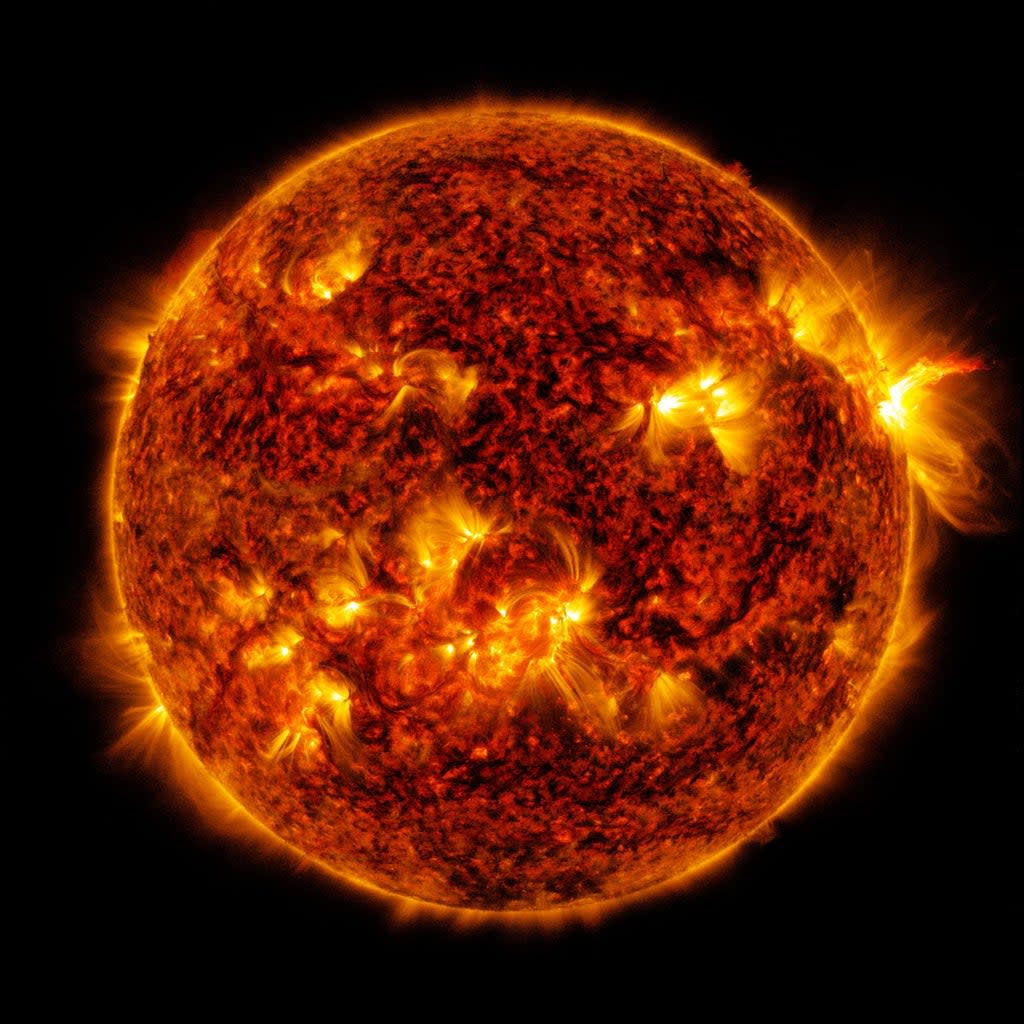Nasa captures image of fourth strong solar flare of the year

A strong solar flare has erupted from the Sun, the fourth flare of such similar intensity in 2022, but an associated stream of charged particles discharged by the Sun will likely miss the Earth.
Nasa’s Solar Dynamics Observatory captured an image of the flare as it occurred at 9.47am EDT on Saturday morning.
A solar flare is a powerful burst of radiation released during an eruption on the Sun’s surface that can interfere with radio communications and create problematic fluxes in electric grids, though the National Oceanic and Atmospheric Administration’s Space Weather Prediction Center noted that if Saturday’s flare caused any radio blackouts, it was likely over the Atlantic Ocean.
Solar flares are often accompanied by coronal mass ejections, plumes of charged particles and magnetic fields ejected from the Sun that can cause auroras and geomagnetic storms if they interact with Earth’s magnetic field. According to Noaa however, the coronal mass ejection associated with Saturday’s flare will miss Earth.
Noaa rates solar flare intensity based on the emission of X-rays, and Saturday’s flare was rated an X1.1 flare on is space weather scale, with X-class flares considered “strong” when ranging from X1 to X10, “severe” ranging from X10 to X20, and “extreme for flares any stronger than that. The strongest solar flare recorded was an X28 flare observed in 2003.
Saturday’s was the third most powerful solar flare observed so far in 2022, Nasa observed an X2.2 flare on 19 April, an X1.3 flare on 30 March, and another X1.1 flare was measured on 17 April. The X2.2 flare was the strongest was flare observed since 2017.
The frequency and intensity of solar flares are likely to increase over the next few years as the Sun heads towards its magnetic activity maximum, the peak of a roughly 11-year cycle in solar eruptions.
While many solar flares and coronal mass ejections cause few problems, they can create hazards for space operations. On 4 February, a geomagnetic storm caused by a coronal mass ejection swelled Earth’s upper atmosphere and dragged 40 newly launched SpaceX satellites out of orbit.

